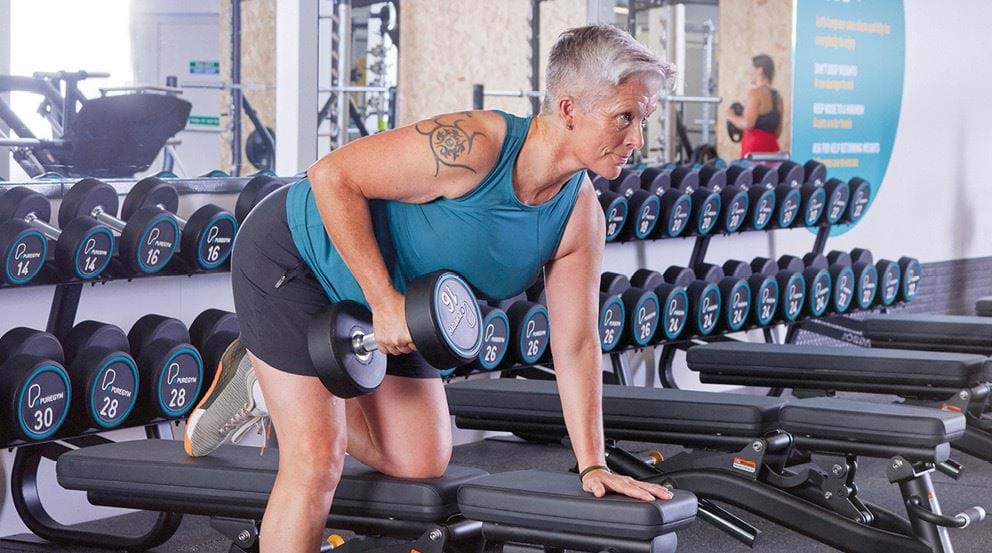
Menopause & Muscle: A Proven Resistance Training Routine to Stay Strong
Whether in perimenopause or menopause, strength training is essential for maintaining health and managing symptoms. Here's why it matters and how to get started.

Woman doing barbell squats in gym
The Impact of Menopause
During perimenopause (lasting 2-8 years), oestrogen and progesterone levels decline. Menopause officially begins after 12 months without a menstrual period. These hormonal changes can cause:
- Hot flashes and mood swings
- Muscle mass loss (up to 10% in arms and legs)
- Bone density reduction (up to 20%)
- Joint pain and reduced flexibility
- Increased visceral fat
- Lower energy levels
- Sleep disruption
Benefits of Resistance Training During Menopause
Resistance training specifically helps:
- Maintain and build muscle mass
- Improve bone density
- Enhance joint flexibility and stability
- Boost metabolism
- Increase energy levels
- Improve sleep quality
Recommended Training Schedule
Perform these workouts 2-3 times per week, with sessions lasting 30-60 minutes. Always warm up first with light cardio and dynamic stretches.
Upper Body Workout:
- Dumbbell Shoulder Press: Strengthens shoulders and upper back
- Lat Pulldown: Targets upper back and lats
- Seated Row: Improves posture and stability
- Dumbbell Lateral Raises: Builds shoulder strength
- Cable Face Pulls: Enhances posture and spine support
Lower Body Workout:
- Barbell Back Squats: Strengthens legs and improves balance
- Lunges: Targets multiple leg muscles
- Leg Press: Controlled leg strengthening
- Glute Bridges: Promotes pelvic stability
- Dumbbell Step Ups: Enhances functional strength
Full Body and Core Workout:
- Deadlifts: Full-body strengthening
- Kettlebell Swings: Improves cardiovascular fitness
- Plank: Enhances core stability
- Russian Twists: Strengthens obliques
- Deadbugs: Promotes spinal stability
Progress Safely By:
- Tracking workouts and weights used
- Gradually increasing weights or repetitions
- Taking 2-3 rest days weekly minimum
- Listening to your body and adjusting as needed
Remember to cool down with stretches focusing on worked muscle groups. Always consult healthcare providers before starting a new exercise routine.
[Related image content follows as in original article]
